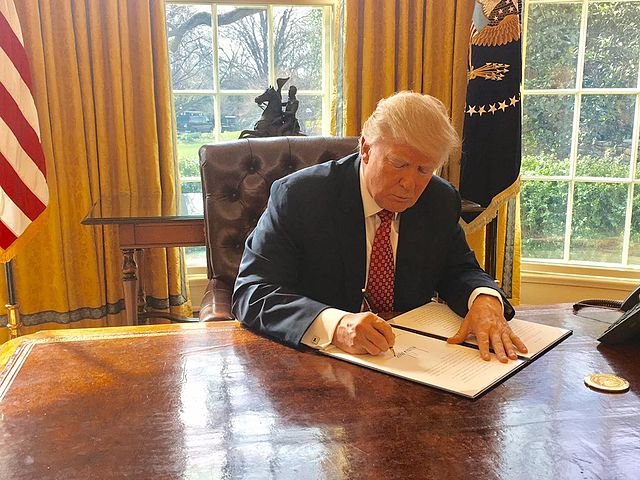 News
NewsThe four executive actions President Donald Trump signed Saturday may face legal challenges because the Constitution grants Congress, not the president, the power to tax and spend.
Trump signed three presidential memoranda and an executive order to provide economic relief for the economic crisis caused by COVID-19. The three memoranda seek to increase the unemployment benefit to $400, defer student loan interest on loans held by the Department of Education, and create a “payroll tax holiday” that defers tax withholding from September 1, 2020, through December 31, 2020. The executive order says that the Trump administration will find ways to protect renters from eviction and homeowners from foreclosure.
The executive actions came as Congress was still negotiating a more expansive stimulus package. Critics of the president’s actions say that they violate the core tenets of the separation of powers. The president’s actions take away powers explicitly granted to Congress and place those powers in the executive branch. In this case, those powers are the ability to tax and spend.
Democrats and Republicans have criticized the president’s actions. Speaker of the House Nancy Pelosi said, “What the president did is unconstitutional slop,” and Republican Senator Ben Sasse said, “President Obama did not have the power to unilaterally rewrite immigration law with DACA and President Trump does not have the power to unilaterally rewrite the payroll tax law.”
The primary legal concern with the president’s actions is that the US Constitution explicitly grants Congress Spending Powers in Article I. This grants Congress the powers to raise revenues through taxes and to appropriate funds. The two actions that are likely to face the most significant challenges are the memorandum increasing the unemployment benefit to $400 and the memorandum calling for the “payroll tax holiday.”
Falling between the Democrats’ call for $600 and the Republicans’ $200, the president’s memorandum says that the federal government will cover $300 a week, and the individual states are responsible for the remaining $100. The presidential memorandum calls for the benefit to be funded through funds allocated to the Federal Emergency Management Agency (FEMA) and for states to use funds provided to them earlier in the year for COVID-19 relief. Challengers to this action say that the president does not have the authority to say how money should be spent.
Additionally, challengers say that the “payroll tax holiday” that defers federal tax withholding from September through December for people earning less than $100,000 a year exceeds the president’s powers. Currently, the president’s action only defers the payroll tax, meaning employees will still be required to pay the tax on April 15. However, the memorandum calls for the Secretary of the Treasury to explore avenues to forgive and eliminate the payroll taxes. Payroll tax revenues fund social security. Trump cannot forgive the payroll taxes without Congressional approval because Congress, not the president, is granted the powers to tax and spend.
In addition to challenging their constitutionality, Democrats have called Trump’s actions “unworkable, weak and narrow.” Congress will continue negotiations on an expansive coronavirus stimulus package this week.

